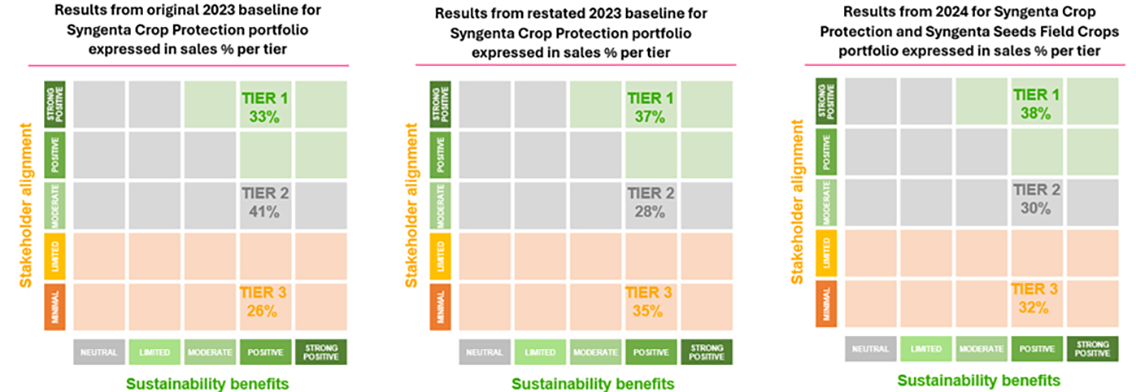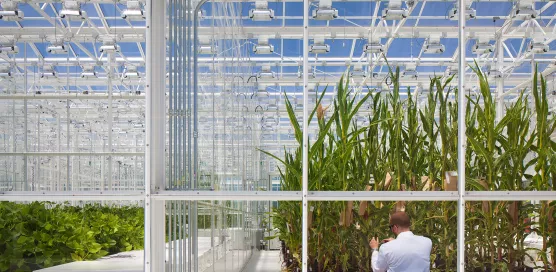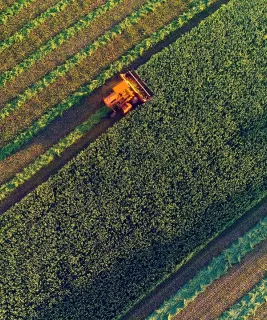

A robust tool to demonstrate portfolio sustainability progress
Syngenta Group has developed a Portfolio Sustainability Framework (PSF) to provide increased transparency to external stakeholders on the ongoing sustainability profile of the portfolio and capture internal progress on portfolio sustainability.
Implementation of the PSF started in 2024 with the Syngenta Crop Protection business unit. This was complemented with the addition of Syngenta Seeds Field Crops in 2025. The PSF covers 94% of total Syngenta AG sales, as the remainder is from the Syngenta Vegetable Seeds & Flowers business, currently not in scope for the PSF. Adaptation and implementation across further business units is planned going forward.
Jeff Rowe
“The Portfolio Sustainability Framework (PSF) is a clear demonstration of how we place innovation at the core of our business. It helps us capture internal progress on the sustainability of our portfolio, highlighting opportunities for business growth where we can support our customers and address the global challenges in agriculture. It underpins our business performance and long-term growth."

A scalable and data-driven framework, the PSF is designed to rate a given formulated product or seed variety, in a particular crop and specific geography.
The PSF was proactively developed considering characteristics and requirements specific to the sector, inspired by the Portfolio Sustainability Assessment guidelines set forth by the World Business Council for Sustainable Development (WBCSD), a framework widely embraced by many chemical companies, reporting tangible business benefits and progress.
The overall methodology and a sample of products in the 2023 baseline were subject to review by external consultants, Arthur D. Little (ADL). ADL was one of the co-authors of the Portfolio Sustainability Assessment methodology published by the World Business Council for Sustainable Development (WBCSD) in 2018.
The 2023 Syngenta Crop Protection PSF was restated to factor in changes made by Cornell University to the Environmental Impact Quotient calculation, capture additional benefits and refine estimates, including carbon emission factors. The 2024 Syngenta PSF is a combined profile capturing both the Syngenta Crop Protection and Syngenta Seeds Field Crops portfolios.

As the framework continues to be embedded into the business strategy, data will continue to be refined, and additional benefits will be documented.
Based on current business plans, we expect the proportion of tier 1 products in the Crop Protection portfolio to reach 43% by 2030 (plus 6% vs 2023 profile).
This target is based on the expected launch of new active ingredients, improvements in product mixes, new products with lower dose rates, and reduction of key product carbon footprints, particularly for our proprietary compounds. All of which aligns our growth & investment strategy with external stakeholder expectations, including consideration of future regulatory requirements and secondary value chain standards. The development of differentiated sustainability benefits offers further growth opportunities.
Our internal decision criteria give overall preference to parameters that lead to products with higher tier positioning in the PSF. Our approach to sustainability is in line with our business targets, with higher tier products being more profitable overall.
Targets for the combined Crop Protection and Seeds Field Crops portfolio will be set in 2026 after the first year of inclusion of Seeds Field Crops.
A VITAL TIME FOR AGRICULTURE

With the global population on track to reach 9.7 billion by 2050, farmers need to grow more food while reducing their impact on the environment and safeguarding natural resources.




